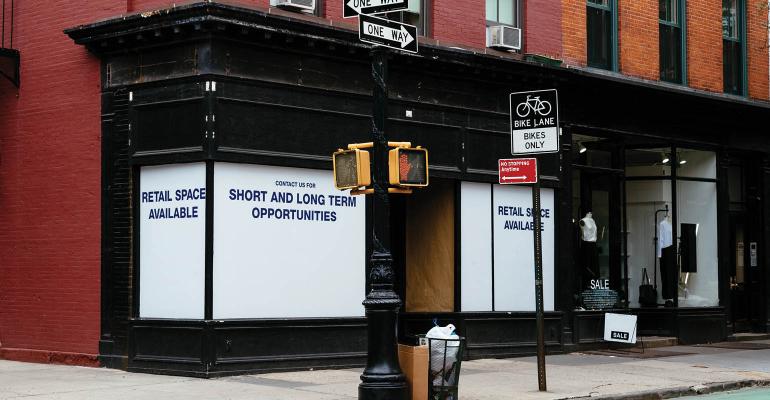(Bloomberg)—Take a stroll down Manhattan’s Fifth Avenue, one of the most famous shopping thoroughfares in the world, and you’ll find the emptiness hard to ignore.
New York’s vacant storefront epidemic doesn’t end there: Walk one block east to Madison Avenue, and nearly 30% of all shops are available for rent, according to a report by brokerage Cushman & Wakefield.
Business owners across the city have increasingly been forced to close up shop amid soaring rents and competition from e-commerce companies, but just how pervasive is the problem?
Local lawmakers are keen to find out. The New York City Council passed legislation this week that requires the government to track numerous metrics for commercial properties, including vacancies. The effort, aimed at creating a more comprehensive data set to monitor the health of the city’s small businesses, seeks to replace the existing patchwork of available information, which doesn’t paint a complete picture of the state of the market.
“Over the course of the last year, a slew of beloved local establishments across the city closed amid skyrocketing costs,” the city council wrote in its report this week. “There is currently not enough data to ascertain the full scope of the issue.”
The NYC Department of Small Business Services released a study in May that found the city’s average storefront vacancy rate climbed to 8.9% in 2018 from 5.6% the prior year, though the data was self-reported by individual business districts and didn’t span the whole city.
Int. 1472-B, one of five bills focused on small businesses that was passed by the city council this week, requires the department of finance to collect from owners details about which properties are vacant, lease lengths, upcoming expirations, store sizes and rental rates. It also mandates a public online database of the information.
Another bill, Int. 1049-A, requires the city to conduct an analysis of the state of storefront businesses every three years. The assessment includes number of vacancies, consumer spending by retail category, physical conditions of storefronts and challenges facing commercial tenants.
The other measures focus on helping store owners understand and stay up to date on city regulations, and collecting data on “microbusinesses,” or those with no more than nine employees.
To contact the reporter on this story: Lily Katz in New York at [email protected].
To contact the editors responsible for this story: Debarati Roy at [email protected]
Daniel Taub
© 2019 Bloomberg L.P.




